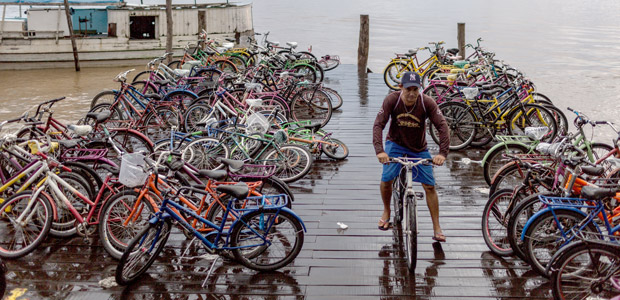Latest Photo Galleries
Brazilian Markets
18h30 Bovespa |
-1,12% | 125.924 |
16h43 Gold |
0,00% | 117 |
17h00 Dollar |
+1,50% | 5,1920 |
16h30 Euro |
+0,49% | 2,65250 |
ADVERTISING
Supported by Wooden Stakes in Pará, "Pedal City" Known to Use Bikes as Ambulances
04/03/2017 - 14h20
Advertising
SÉRGIO RANGEL
SPECIAL CORRESPONDENT TO AFUÁ (PA)
On Wednesday at 23h47, a patient with a broken leg is placed in a "bike-ambulance" to be transferred to Macapá.
They travel 500 meters in a four-wheel vehicle improvising as an ambulance, from the city hospital to the port.
From there, he leaves Pará and travels to neighboring Amapá by boat.
That same evening, three officers patrolled one of the city's most dangerous neighborhoods, Capim Marinho, by bike.
| Avener Prado/Folhapress | ||
 |
||
| Bicycle parking in Afuá |
The next day, "bicitaxi" drivers crowded around the dock, awaiting the arrival of passengers from Amapá.
On the northwest side of the Marajó archipelago, made up of thousands of islands, Afuá is the pedal city. In a straight line, she is situated 256 km from Belém, and 79k from Macapá.
Situated over palafitas (pegs that sustain rooms constructed over water) to escape the wrath of the sea, this Pará city has turned the bicycle into its primary form of transportation.
The narrow streets interact with the daily back and forth of the cyclists. Known as the Venice of Marajó, the city of almost 40,000 inhabitants sees nearly one bicycle per person in the urban zones, where half of the population resides.
Translated by SUGHEY RAMIREZ
Read the article in the original language
+Latest news in English



